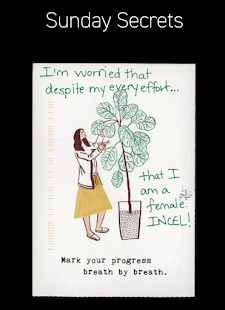Combinatory Poetics
Chapter two discusses the emergence of combinatory poetics, a form of digital literature that emerged in opposition to the ideology of nationalism and rationality that many believed led to the horrors of WW1. One group of artists, the Dadaists, used randomness and hyper individuality in their art. They rejected structure and embraced stream of consciousness. One way to do this was through cutting up a newspaper and combining words to create "permutation poems." With the creation of computers, this process could be expanded upon through algorithm and code. Alan Turing took this one step further with his imitation game. The goal of this experiment was to see if computers could manipulate humans through language. The game consisted of an interrogator, a man, and a woman, but Turing would replace either the man or the woman with a computer. He wanted to see if the computer could fool the interrogator through its encoded language. He theorized that eventually, the technology would become so sophisticated that computers could outperform humans. While computers are not "intelligent," they are really good at using algorithms to complete tasks very quickly and accurately. The possibilities of new and unique art and literature are boundless so long as their code allows it.
Stir Fry Text: Spastext by Jim Andrews (eliterature.org)
One type of combinatory poetry I thought was interesting was Stir Fry Text by Jim Andrews. When the user hovers over the text in the poem, it changes to another text that was predetermined by the author, thus changing the meaning of the poem. Every sentence in the poem can be changed and reorganized in several different ways. I think that this is a fascinating way that computer code and combinatory poetics can be used to create meaning in a way that regular text can't.



I found Stir Fry to be really unique and interesting to click through! I thought it was interesting getting to just hover over a certain word and the whole poem changes its meaning. It was fun getting to see how many versions of a poem you can create. Cant wait to hear more about it Tuesday!
ReplyDeleteI really enjoyed playing around with Stir Fry, and I loved reading each piece of the changing text. I thought it was very engaging to scan over the words hoping to catch all of the sporadic sentence changes. It was really fun uncovering the messages as I clicked through. It was similar to the Cent Mille milliards de poems, as you can change sentences to create new meanings which was close to the idea behind Stir Fry. It shows how random Dada art can be, like you said above. Can't wait to lean more about it during class!
ReplyDeleteI think it's interesting to see how this style of poetry emerged as a movement against WWII theology. Your example was really fun!
ReplyDeleteStir Fry Text was a great one to bring as an example, we'll have to come back to it when we look at the generative works next week!
ReplyDelete